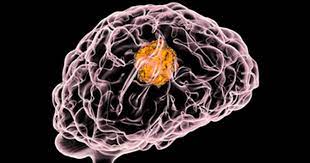
[ad_1]
Within the intricate landscape of neurological health, brain tumours stand as complex challenges with far-reaching implications. Recent advancements in medical science have propelled the understanding, diagnosis, and treatment of brain tumours to new heights. In this article, we will explore the complexities of brain tumours, the latest diagnostic technologies, and the evolving landscape of treatment modalities that offer hope and progress in these formidable conditions.
Understanding Brain Tumors:
Diversity of Brain Tumors:
Brain tumours are diverse abnormal growths that can arise within the brain or its surrounding structures. They can be classified as benign or malignant, and their characteristics vary based on location, cell type, and growth rate.
Challenges in Diagnosis:
Diagnosing brain tumours poses unique challenges due to the intricacies of the central nervous system. Symptoms may be subtle or overlap with other neurological conditions, necessitating advanced imaging and diagnostic techniques for accurate identification.
Advances in Diagnosis:
Neuroimaging Technologies:
- MRI and Functional MRI (fMRI): High-resolution magnetic resonance imaging (MRI) provides detailed images of brain structures, while functional MRI maps brain activity, aiding in tumour localization and surgical planning.
- CT Scans: Computed tomography (CT) scans offer quick and detailed images, helping identify the size and location of tumours.
- PET Scans: Positron emission tomography (PET) scans can reveal metabolic activity in the brain, assisting in differentiating between benign and malignant tumours.
Liquid Biopsies:
Emerging liquid biopsy techniques analyze cerebrospinal fluid or blood for genetic markers associated with brain tumours. This non-invasive approach holds promise for early detection and monitoring treatment response.
Genomic Profiling:
Understanding the genetic makeup of brain tumours is crucial for personalized treatment strategies. Genomic profiling helps identify specific mutations, guides targeted therapies, and informs prognosis.
Treatment Modalities:
Surgery:
Advances in neurosurgical techniques, including image-guided and minimally invasive procedures, enhance the precision and safety of tumour removal. Surgeons can navigate delicate brain structures more accurately, minimizing damage to healthy tissue.
Radiation Therapy:
- Stereotactic Radiosurgery: Precise and targeted radiation, such as stereotactic radiosurgery, delivers high doses of radiation to the tumour while sparing surrounding tissues. This is particularly effective for small tumours or those in challenging locations.
- Proton Therapy: Proton therapy offers precise radiation delivery, minimizing damage to healthy tissue. This modality is beneficial for certain types of brain tumours.
Chemotherapy:
- Intrathecal Chemotherapy: Direct administration of chemotherapy into the cerebrospinal fluid is effective for treating brain and spinal cord tumours.
- Targeted Therapies: Drugs targeting specific molecular pathways associated with tumour growth offer more tailored and effective treatment options.
Immunotherapy:
Immunotherapy harnesses the body’s immune system to target and destroy cancer cells. In brain tumours, ongoing research explores the potential of immunotherapeutic approaches to enhance treatment outcomes.
Focused Ultrasound:
Focused ultrasound technology allows non-invasive treatment of certain brain tumours by delivering targeted ultrasound waves to destroy or disrupt tumour cells.
Challenges and Future Directions:
Blood-Brain Barrier:
The blood-brain barrier presents a challenge for drug delivery, limiting the effectiveness of specific treatments. Research is focused on developing innovative strategies to overcome this barrier and enhance drug delivery to brain tumours.
Tumor Heterogeneity:
The genetic and cellular diversity within brain tumours poses challenges for effective treatment. Advancements in understanding tumour heterogeneity are essential for tailoring therapies to individual patients.
Early Detection and Prevention:
Early detection remains a crucial factor in improving brain tumour outcomes. Continued research aims to identify biomarkers and risk factors for earlier intervention and preventive strategies.
Conclusion:
Brain tumour diagnosis and treatment landscape is evolving rapidly, offering new hope and possibilities for patients facing these challenging conditions. From cutting-edge imaging technologies to personalized treatment modalities, advances in medical science are reshaping the approach to brain tumours. As researchers, clinicians, and patients navigate the maze of brain tumours, the collaborative efforts of the medical community continue to illuminate new paths toward improved outcomes, increased survival rates, and, ultimately, a brighter future for those affected by these complex neurological challenges.
[ad_2]
Ghananewshome





